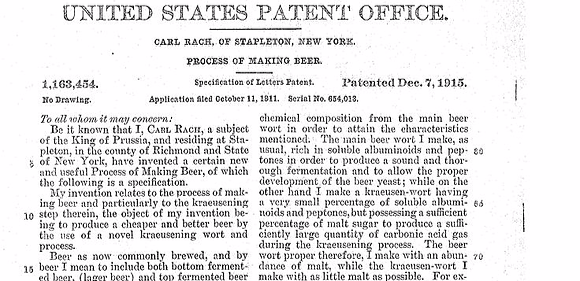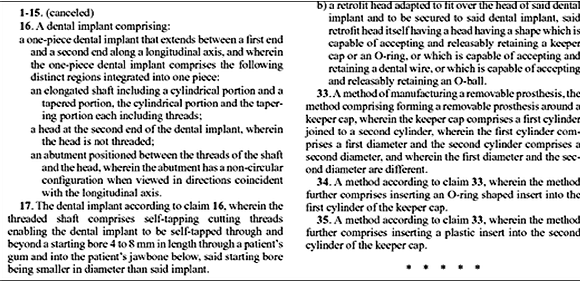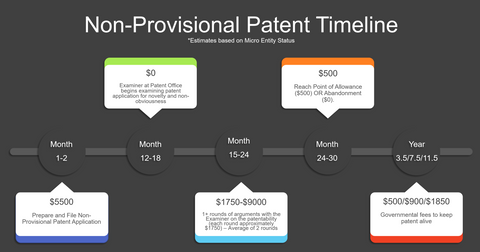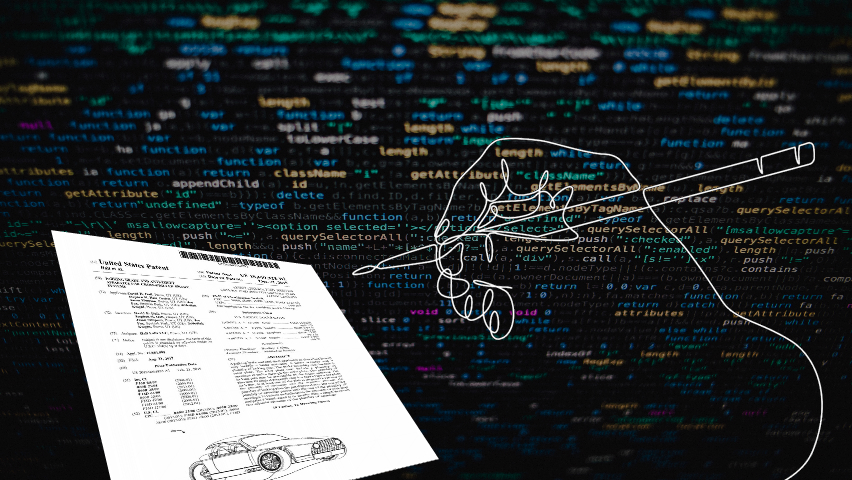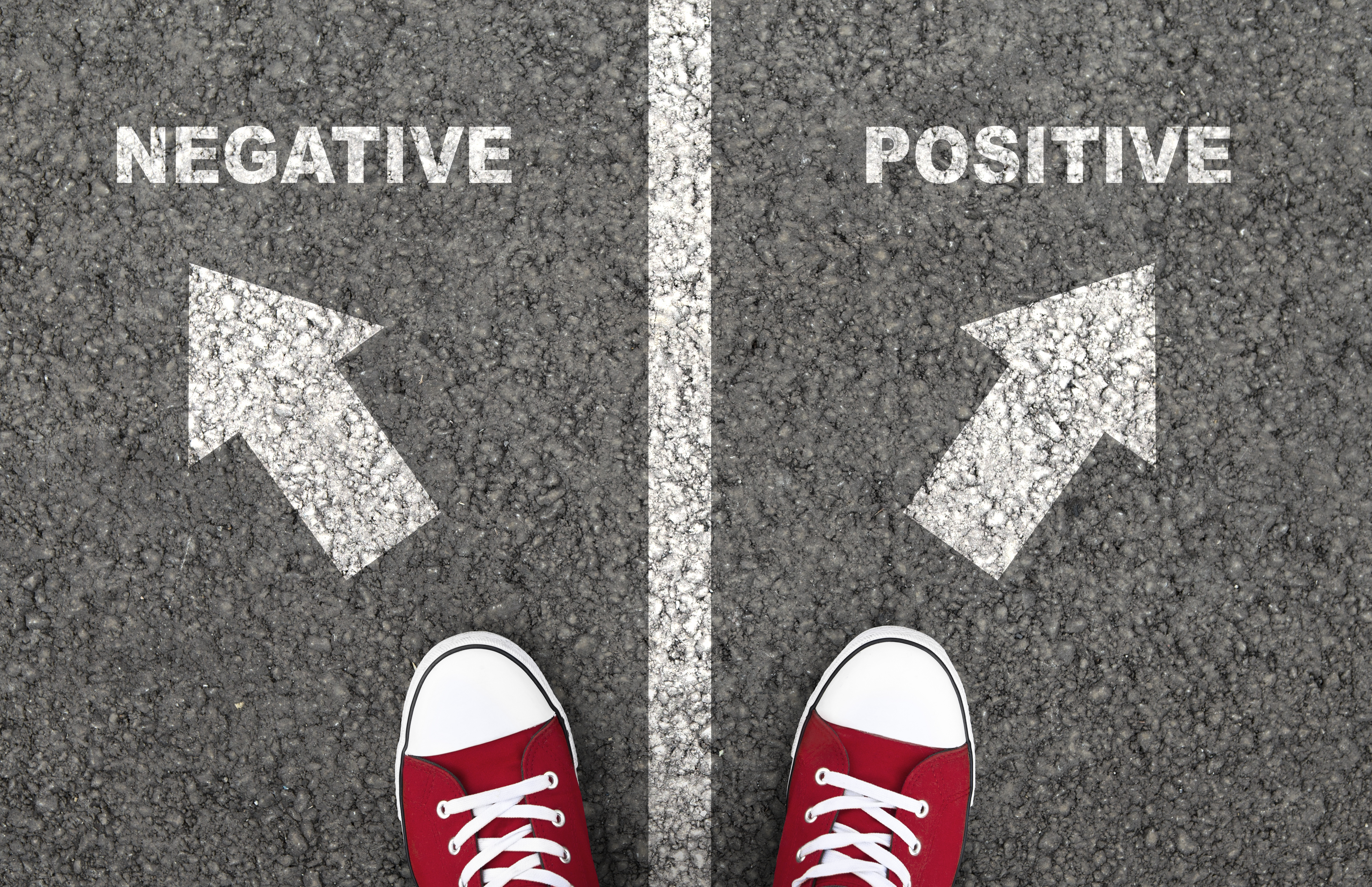Introduction
Hey there! Are you an inventor with a groundbreaking idea? Well, let me tell you something important - hiring a patent attorney for your invention could be a game-changer. Don't worry if you're not familiar with the term yet; I'm here to break it down for you and shed some light on why it's crucial to have a patent attorney on board.
So, what exactly is a patent attorney? Simply put, a patent attorney is a legal professional who specializes in the intricacies of patent law. They are trained to handle all aspects of the patent process, from filing the application to protecting your invention from potential infringements. Trust me, these guys are the real deal when it comes to safeguarding your intellectual property.
Now, you might be wondering, why should you bother hiring a patent attorney for your invention? Well, buckle up because I'm about to reveal some eye-opening insights. In a nutshell, patent attorneys bring a unique set of skills and expertise that can make a world of difference for inventors like you. Let me give you a sneak peek into what we’ll be discussing in this article.
First off, we'll dive into the complexity of the patent process. Believe me, it's no walk in the park. There are different types of patents, various requirements, and a daunting series of steps you need to navigate. It's like solving a puzzle with countless pieces, and a patent attorney can help you put them all together.
Next up, we'll explore the expertise of patent attorneys in patent law. These professionals are well-versed in the legalities surrounding patents and can guide you through the complex maze of rules and regulations. Their specialized knowledge can be a saving grace when it comes to understanding patent laws and avoiding any potential pitfalls.
Then, we'll discuss how a patent attorney can maximize your patent protection. You see, it's not just about getting a patent; it's about getting the strongest and most comprehensive patent possible. A patent attorney can conduct thorough research and analysis to ensure your invention is adequately protected. They'll also help you draft a solid patent application, leaving no room for loopholes that could jeopardize your rights.
Now, let's talk about the costly mistakes that inventors often make without the guidance of a patent attorney. Believe me, these blunders can lead to nightmares. Losing your patent rights or facing financial setbacks due to avoidable errors is the last thing you want. I'll share some examples and case studies that will make you realize the true significance of having a patent attorney by your side.
But that's not all! We'll also explore how patent attorneys can help you in patent infringement cases. Unfortunately, infringement can happen, and you need to be prepared. A patent attorney can be your knight in shining armor, defending your rights and ensuring that justice is served.
Finally, we'll wrap up with a recap of why hiring a patent attorney is absolutely crucial for inventors like you. I'll leave you with some encouraging words to seek professional legal assistance and remind you of the countless benefits of working with a patent attorney.
So, are you ready to take your invention game to the next level? Get ready to discover the power of having a patent attorney on your side. Let's dive in!1. Understanding the Patent Process
So, you've come up with a brilliant invention, something that nobody else has thought of before. You're excited and eager to protect your idea and reap the rewards of your hard work. Well, my friend, that's where a patent comes into play. But here's the thing - the patent process can be quite complex and overwhelming if you don't have the proper knowledge or guidance.
First things first, let's understand what a patent actually is. A patent is a legal document that grants exclusive rights to an inventor for their invention. It ensures that no one else can copy, use, or sell your invention without your permission. Pretty cool, right?
Now, there are different types of patents depending on what you've invented. You've got utility patents, which cover new and useful processes, machines, compositions of matter, and improvements thereof. Then there are design patents, which protect the ornamental design or appearance of a product. And finally, we have plant patents, which are for inventing or discovering and asexually reproducing any distinct and new variety of plant.
The patent process involves several steps, including researching prior art (existing similar inventions) to determine if your idea is truly novel, preparing a detailed patent application, filing the application with the appropriate patent office, and going through the examination process. It's a lot to handle if you're not familiar with it.
This is where hiring a patent attorney becomes incredibly important. They are experts in patent law and can guide you through each step of the process. They have the specialized knowledge and experience to navigate the legal complexities and ensure that your invention is protected to the fullest extent possible.
Imagine trying to navigate the patent process on your own. It's like trying to find your way through a dense jungle without a map or a guide. You might miss crucial steps, make costly mistakes, or even give up out of frustration. A patent attorney acts as your compass, guiding you through the entire journey.
They will help you understand the requirements for obtaining a patent, explain any potential roadblocks or limitations, and assist with drafting a strong patent application. With their expertise, they can help you maximize your chances of successfully obtaining a patent and protect your invention from infringement.
Not only that, but a patent attorney can also provide valuable advice and guidance on patent strategies and portfolio management. They can conduct thorough patent research and analysis to ensure that your invention is truly unique and doesn't infringe on any existing patents.
Remember, the patent process isn't just about getting a document that says you have a patent. It's about safeguarding your invention, your hard work, and your potential future profits. To do that, you need someone who knows the ins and outs of the patent system and can advocate for you.
So, if you've got an invention that you believe in, don't hesitate to hire a patent attorney. They are your greatest ally in protecting your invention and ensuring that you can fully capitalize on your innovative ideas. It's a small investment that can make a world of difference in the long run.
Stay tuned for the next section, where we'll delve into the expertise of patent attorneys and why their specialized knowledge is crucial for inventors like you.2. Expertise in Patent Law
When it comes to protecting your invention, it's not just about coming up with a great idea. There are legal aspects involved in the process that can be quite complex and overwhelming. That's where a patent attorney comes in. These professionals have specialized knowledge and expertise in patent law, making them invaluable allies for inventors like you.
You might be wondering, "Why do I need a patent attorney? Can't I navigate the process on my own?" While it's true that you can technically file a patent application yourself, it's important to understand that patent law is a highly specialized field. There are intricate regulations, procedures, and nuances that can easily trip up an inexperienced inventor.
Patent attorneys, on the other hand, have spent years studying and practicing patent law. They understand the ins and outs of the system and can guide you through the entire patent process. From understanding the patentability requirements to drafting a strong and enforceable patent application, they'll help ensure you're on the right path. Their expertise can be particularly crucial when it comes to navigating any legal complexities that may arise during the process.
Let's consider a scenario where you invented a revolutionary new product, and you're excited to bring it to market. Without the guidance of a patent attorney, you might overlook crucial steps or make mistakes that could jeopardize your chances of obtaining a patent. This could mean someone else swooping in and snatching your idea, or worse, facing costly legal battles down the line.
With a patent attorney by your side, you can have peace of mind knowing that every aspect of the patent process is being handled by a professional. They can analyze prior art, research existing patents, and ensure your invention meets the novelty and non-obviousness requirements. They'll work closely with you to understand your invention inside out and effectively articulate its uniqueness in your patent application.
Moreover, patent attorneys can help strategize the scope of your patent protection. They'll assist in determining whether a utility, design, or plant patent is most appropriate for your invention. By carefully crafting the patent claims, they'll ensure you have the broadest possible protection while avoiding any unnecessary limitations.
In the event that your invention faces a patent dispute or infringement, having a patent attorney on your side becomes even more crucial. They have the expertise to protect your rights and represent you in any infringement litigation. Their understanding of patent law will be invaluable in building a strong defense against anyone trying to steal or copy your invention.
In conclusion, the importance of hiring a patent attorney for inventors cannot be overstated. From navigating the intricacies of the patent process to maximizing patent protection and avoiding costly mistakes, their expertise is invaluable. So, when it comes to safeguarding your invention and ensuring its success, don't hesitate to seek the guidance and assistance of a qualified patent attorney. Your invention deserves the best legal protection, and a patent attorney can provide just that.Title: Maximizing Patent Protection: Why Hiring a Patent Attorney Is Essential
Are you an inventor with a groundbreaking idea or invention? Have you ever wondered how you can protect your invention and ensure that no one else steals your hard work? Well, you've come to the right place! In this article, we'll discuss the importance of hiring a patent attorney to maximize patent protection for your invention.
When it comes to obtaining a patent, the process can be quite complex and daunting. That's where a patent attorney comes in. These legal professionals specialize in patent law and have the expertise to guide you through the entire process. They understand the intricacies of the law, the requirements for obtaining a patent, and the steps involved.
One of the key reasons why hiring a patent attorney is crucial is their expertise in patent law. They have spent years studying and practicing in this field, which gives them an edge in navigating the legal complexities surrounding patents. Whether it's conducting thorough patent research, analyzing existing patents, or drafting strong patent applications, a patent attorney can provide invaluable guidance.
Maximizing patent protection is of utmost importance for inventors. By working with a patent attorney, you can ensure that your invention is thoroughly researched and analyzed to determine its patentability. These professionals have access to databases and resources that can help identify any existing patents or inventions that may pose a challenge to your patent application.
Drafting a strong patent application is crucial for securing patent protection. Patent attorneys have the knowledge and experience to help you craft a comprehensive and robust application that meets all the legal requirements. They can help you accurately describe your invention, define its unique features, and ensure that your patent claims are clear and precise. This attention to detail can make a significant difference in the strength and enforceability of your patent.
Another aspect where patent attorneys excel is in avoiding costly mistakes. Without proper legal guidance, inventors often make common mistakes that can jeopardize their patent rights. From unintentional disclosure of the invention to missing important deadlines, these mistakes can lead to significant setbacks and even loss of patent protection. By working with a patent attorney, you can minimize the risk of making such mistakes and protect your invention legally.
In the unfortunate event of patent infringement, having a patent attorney by your side can be a game-changer. If someone infringes on your patent rights, your attorney can take the necessary legal actions on your behalf. They can help enforce your patent, initiate infringement litigation, and work towards a resolution that protects your rights and interests.
In conclusion, hiring a patent attorney is a wise investment for any inventor. They possess the expertise and knowledge needed to guide you through the complexity of the patent process. From maximizing patent protection and avoiding costly mistakes to defending your rights in infringement cases, these legal professionals play a vital role in safeguarding your inventions.
So, if you have a brilliant idea or invention, don't hesitate to seek professional legal assistance. A patent attorney can make a world of difference in securing and protecting your invention, providing you with peace of mind and the confidence to pursue your innovative dreams. Remember, your invention deserves the best legal protection possible, and a patent attorney is your key to achieving just that!4. Avoiding Costly Mistakes
If you're an inventor and you've come up with a brilliant idea or invention, it's crucial to protect your intellectual property with a patent. However, navigating the patent process can be complex and challenging. That's where a patent attorney comes in to save the day! Hiring a patent attorney can make all the difference in ensuring your invention is properly protected and avoiding costly mistakes that could jeopardize your patent rights.
Let's face it, patent law is no walk in the park. It's a highly specialized field that requires extensive knowledge and expertise. Patent attorneys spend years studying and practicing patent law, making them the perfect guides through the intricate legal landscape. They understand the nuances and complexities involved in obtaining a patent, and they can help you navigate through all the legal jargon and technicalities.
One of the most valuable services a patent attorney provides is helping you maximize patent protection. They can assist you with patent research and analysis, ensuring that your invention is unique and meets all the necessary requirements for patentability. They'll help you draft a strong patent application, taking into account all the intricacies and technical details that could make or break your patent. With their expertise, they can help you secure the broadest possible patent protection for your invention.
Without the guidance of a patent attorney, many inventors make costly mistakes that can lead to the loss of valuable patent rights. These mistakes can come in various forms, from missing important deadlines to improperly describing your invention or failing to disclose all relevant information. Such errors can result in your patent application being rejected or, worse, your patent being invalidated in the future. Trust me, you don't want all your hard work and creativity to go to waste due to avoidable mistakes!
To emphasize the importance of hiring a patent attorney, let's take a look at a few real-life examples. Imagine you invented a groundbreaking technology and decided to go through the patent process without the help of an attorney. You might unknowingly infringe on existing patents, leading to a costly and time-consuming legal battle. Alternatively, improper patent drafting might leave loopholes that competitors can exploit, hindering your ability to fully monetize your invention. These scenarios can quickly turn your dream into a nightmare.
By partnering with a patent attorney, you not only bolster your chances of securing a patent but also gain a strong defense against potential patent infringement. In case someone copies or steals your invention, your attorney will have your back, ensuring your rights are protected. They can represent you in infringement litigation, fight for your patent rights, and potentially secure compensation for any damages caused by infringement.
In conclusion, the importance of hiring a patent attorney for your invention cannot be overstated. They possess the knowledge, experience, and skills needed to navigate the complicated patent process and safeguard your intellectual property. With their help, you can avoid costly mistakes that could jeopardize your patent rights and financial well-being. So, if you're an inventor with big dreams, don't hesitate to seek the professional legal assistance of a patent attorney. It's an investment that can make all the difference in the success and protection of your invention.Defense in Patent Infringement Cases
If you've invented something truly innovative, you know how important it is to protect your intellectual property. Obtaining a patent is the first step towards safeguarding your invention, but what happens if someone else tries to copy or steal your idea? This is where hiring a patent attorney becomes crucial.
In this section, we'll dive into the topic of defense in patent infringement cases and how a patent attorney can be your strongest ally. Picture this – you've worked tirelessly to develop your invention, invested time and money, conducted thorough research, and finally secured your patent. You're ready to market your product and make a name for yourself. But then, out of nowhere, you discover that someone is producing and selling a strikingly similar product, infringing on your patent rights.
This is precisely the situation where a patent attorney can step in and assist you. Patent attorneys specialize in patent law and have an in-depth understanding of the complexities involved. They can help protect your rights and defend your invention against infringement.
So, what exactly can a patent attorney do for you in a patent infringement case? Well, first and foremost, they will analyze the situation and gather evidence to determine if there is indeed infringement taking place. Patent attorneys have the expertise to assess the validity of your patent and identify any potential breaches. They will thoroughly examine the patent claims and compare them to the allegedly infringing product or process.
Once they have established a case of infringement, your patent attorney will work diligently to build a strong defense strategy. They will craft legal arguments, gather supporting evidence, and draft infringement claims against the alleged infringer. This is not an easy task, as it requires in-depth knowledge of patent law, previous court cases, and the ability to navigate the intricacies of the legal system.
Having a patent attorney by your side during patent infringement litigation is immensely valuable. They will represent your interests, gather witnesses, conduct expert testimonies, and negotiate on your behalf if necessary. Patent attorneys are skilled at negotiating settlements and licensing agreements that can help you resolve the dispute while protecting your rights and ensuring you receive appropriate compensation for the infringement.
Additionally, patent attorneys are well-versed in the procedures and timelines of the legal system. They will guide you through the various stages of the litigation process, from filing the initial complaint to presenting your case in court, if it comes to that. Their expertise and experience in litigation can significantly increase your chances of success and minimize potential losses.
In the world of inventors and innovators, patent infringement is unfortunately a common occurrence. Without adequate legal representation, you may find it challenging to protect your invention, enforce your rights, and seek justice. By hiring a patent attorney, you stack the odds in your favor and ensure that your invention receives the defense it rightfully deserves.
In conclusion, don't overlook the importance of hiring a patent attorney when it comes to defending your invention in patent infringement cases. They possess the specialized knowledge, experience, and legal expertise required to navigate the complexities of patent law and protect your intellectual property. Whether you're facing a straightforward infringement or a complex legal battle, having a patent attorney on your side is invaluable. Don't take any chances – consult a patent attorney and safeguard your invention today.Conclusion:
So, as we wrap up this discussion on the importance of hiring a patent attorney for your invention, there are a few key points that we need to recap.
Firstly, we must remember that navigating the patent process can be quite complex. From understanding the different types of patents to the requirements and steps involved in obtaining one, it can be overwhelming for inventors. That's where a patent attorney can really make a difference. They have the expertise and knowledge needed to guide you through this intricate process.
Furthermore, maximizing patent protection is essential for inventors. By hiring a patent attorney, you can ensure that your invention is well-researched and analyzed in terms of existing patents. They will help you draft a strong patent application that maximizes the chances of success.
Another crucial aspect to consider is the avoidance of costly mistakes. Without legal guidance, inventors often make mistakes that can lead to loss of patent rights and financial setbacks. By having a patent attorney by your side, you can minimize the risks associated with these mistakes.
In addition, patent attorneys also play a vital role in defending your rights in patent infringement cases. If someone infringes upon your patent, having a patent attorney represent you in litigation can make a significant difference. They will ensure that your rights are protected and that you receive the compensation you deserve.
To sum it all up, hiring a patent attorney is not only important but also necessary for inventors. They bring specialized knowledge, navigate the legal complexities, maximize patent protection, and help you avoid costly mistakes. So, if you have an invention that you want to protect, I strongly encourage you to seek professional legal assistance. A patent attorney will be your best ally throughout the patent process.
Remember, protecting your invention is crucial, and it's always better to have an expert by your side. Don't risk losing out on potential opportunities by trying to navigate the complex patent process alone. Take the necessary steps to safeguard your invention with the help of a patent attorney. Good luck with your invention!









































